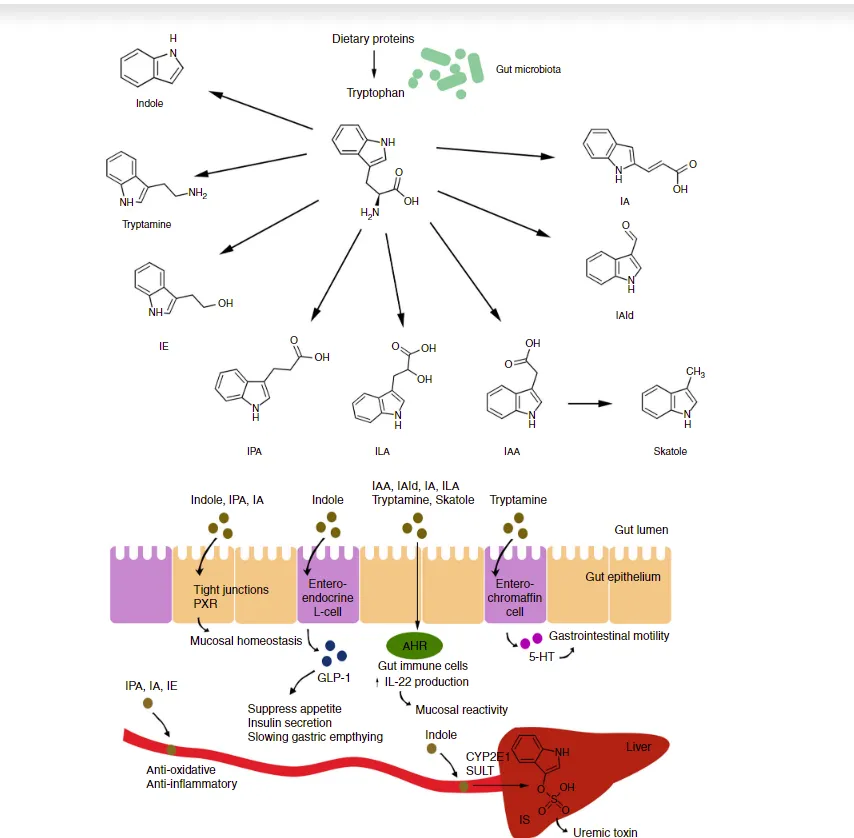Meet your Microbiome: Bacteroidetes
- Adam Rinde, ND
- Jun 26, 2019
- 2 min read
Updated: Apr 22
When you receive microbiome stool analysis; one of the first things you'll see is the relative abundance of Bacteroidetes and Firmicutes. These two bacterial phyla dominate the human gut and serve as a 20,000-foot view of microbial diversity and balance.
Bacteroidetes is a phylum within the standard biological taxonomy: Domain → Kingdom → Phylum → Class → Order → Genus → Species. Most stool analyses discuss findings at the genus and species level.
In addition to Bacteroidetes, the gut microbiome includes other bacterial phyla such as Firmicutes, Actinobacteria, and Proteobacteria, as well as non-bacterial organisms like viruses, bacteriophages, protozoa, helminths, and yeasts.
Bacteroidetes include many commensals, mutualists, and some pathobionts. Notable genera include Bacteroides and Prevotella. Bacteroides species are known for their advanced ability to digest complex polysaccharides, including mucus, pectin, and starches, due to an expanded set of carbohydrate-active enzymes.
Enterotoxigenic Bacteroides fragilis (ETBF) strains that produce Bacteroides fragilis toxin (BFT) have been linked to colorectal carcinogenesis. Meanwhile, Prevotella copri dominance has been shown in mouse models to promote Th17-mediated inflammation, potentially contributing to conditions like rheumatoid arthritis.
Diet strongly influences Bacteroidetes subtypes: high-fiber diets are associated with greater Prevotella abundance, while high-protein and high-fat diets correlate with more Bacteroides. Obesity has been linked to a higher Firmicutes-to-Bacteroidetes ratio, while weight loss and caloric restriction often increase Bacteroidetes levels.
In one study, fecal microbiota transplant (FMT) improved symptoms in Autism Spectrum Disorder (ASD) patients and was associated with increased abundance of beneficial taxa such as Bifidobacterium, Prevotella, and Desulfovibrio (Kang et al., 2017).
The gut microbiome can be shaped and influenced by diet, herbal medicine, medications, aging, travel, and pregnancy. Bacteroidetes, as a core component of this ecosystem, continues to be a major area of research for its role in immune, metabolic, and mental health.
📚 REFERENCES (AMA Format)
Gibiino G, Lopetuso LR, Scaldaferri F, et al. Exploring Bacteroidetes: metabolic key points and immunological tricks of our gut commensals. Dig Liver Dis. 2018;50(7):635–639. doi:10.1016/j.dld.2018.03.021
Wu S, et al. Bacteroides fragilis toxin stimulates intestinal epithelial cell shedding and correlates with disease activity in ulcerative colitis. Nat Med. 2009;15(9):1016-1023. doi:10.1038/nm.2010
Kang DW, et al. Microbiota Transfer Therapy alters gut ecosystem and improves gastrointestinal and autism symptoms: an open-label study. Microbiome. 2017;5(1):10. doi:10.1186/s40168-016-0225-7
Ley RE, et al. Obesity alters gut microbial ecology. Proc Natl Acad Sci U S A. 2005;102(31):11070-11075. doi:10.1073/pnas.0504978102
Scher JU, et al. Expansion of intestinal Prevotella copri correlates with enhanced susceptibility to arthritis. eLife. 2013;2:e01202. doi:10.7554/eLife.01202
Jiang H, et al. Altered gut microbiota profile in patients with generalized anxiety disorder. Brain Behav Immun. 2015;48:186–194. doi:10.1016/j.bbi.2015.03.016



